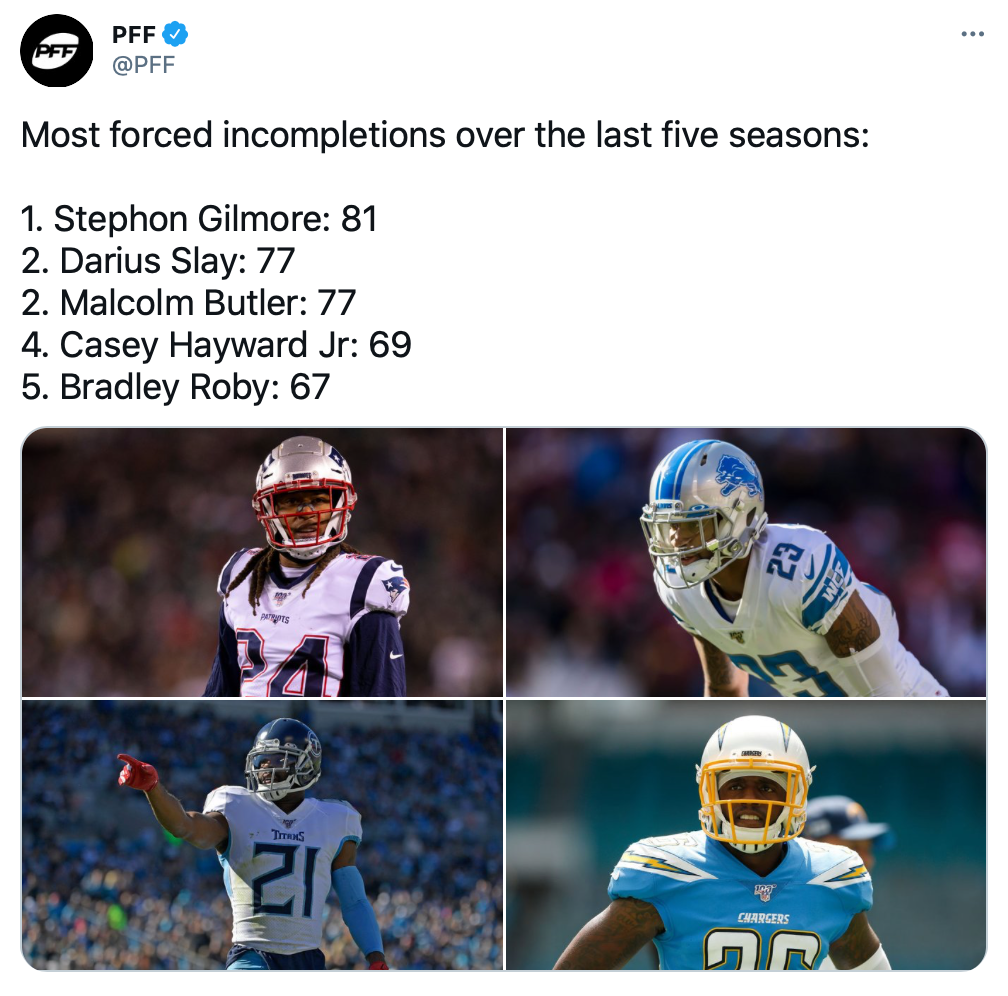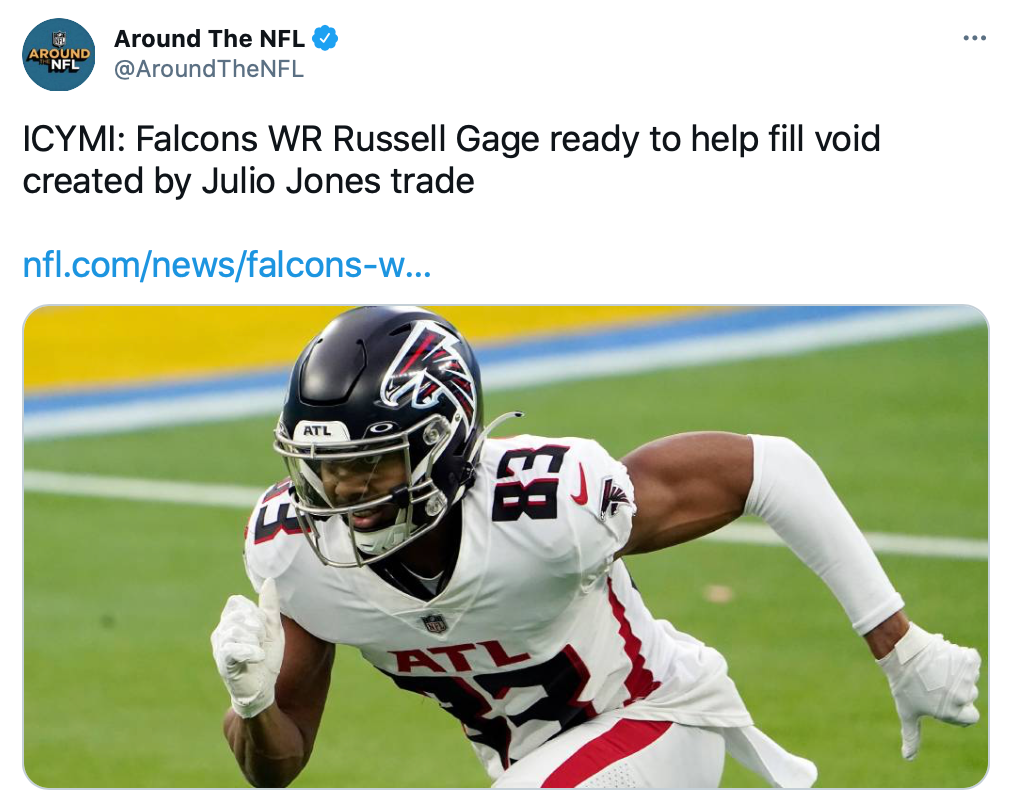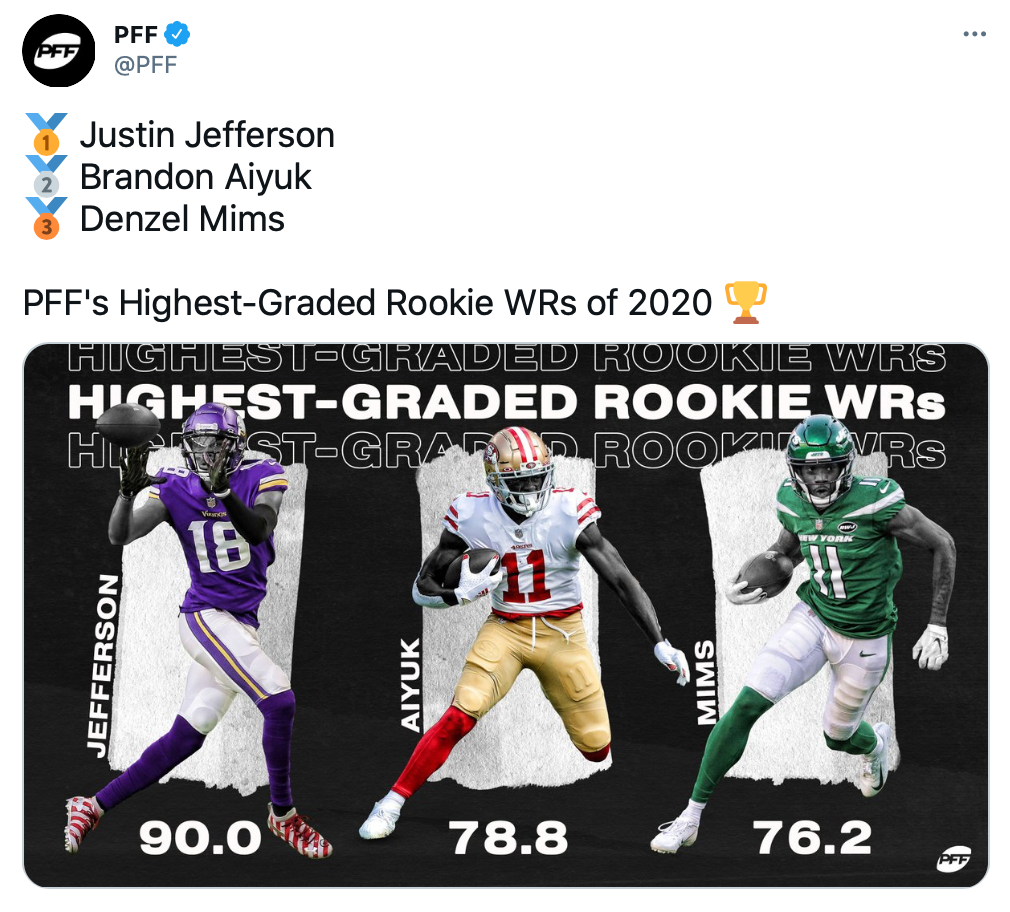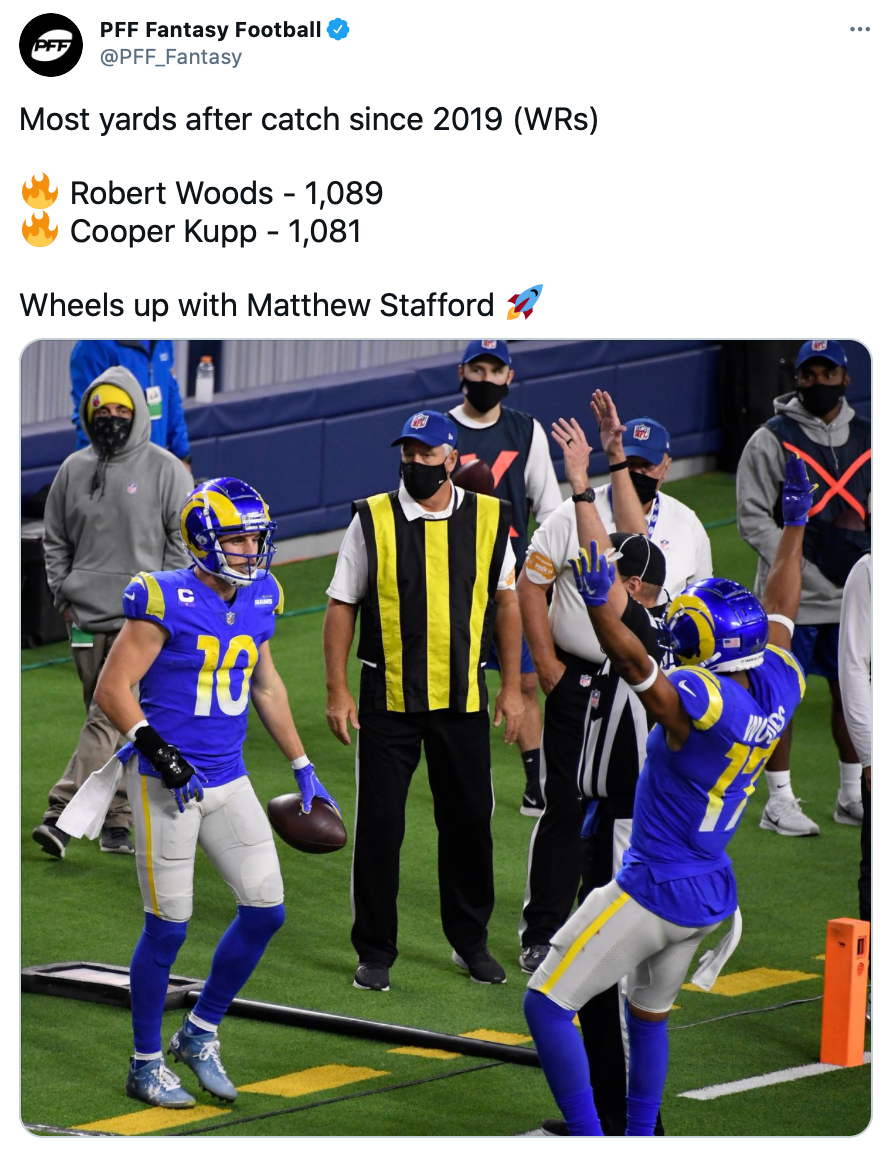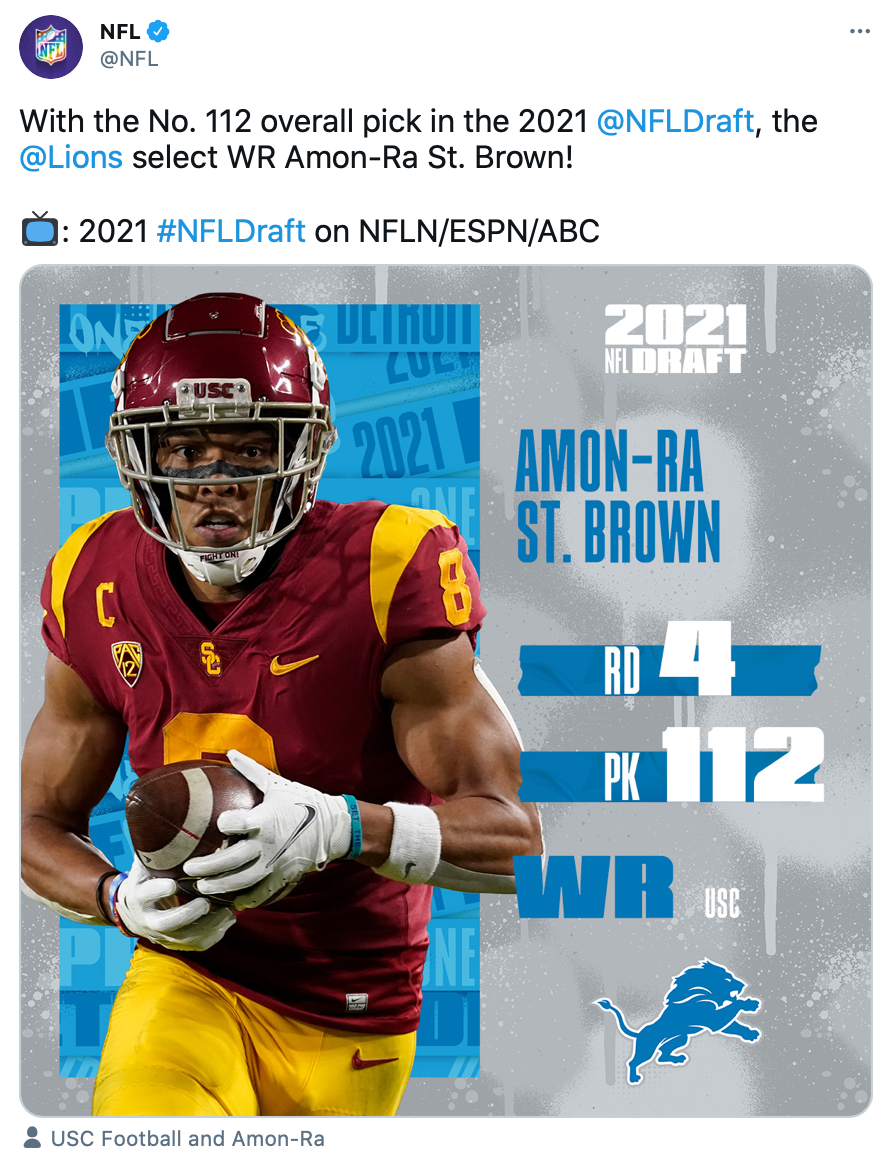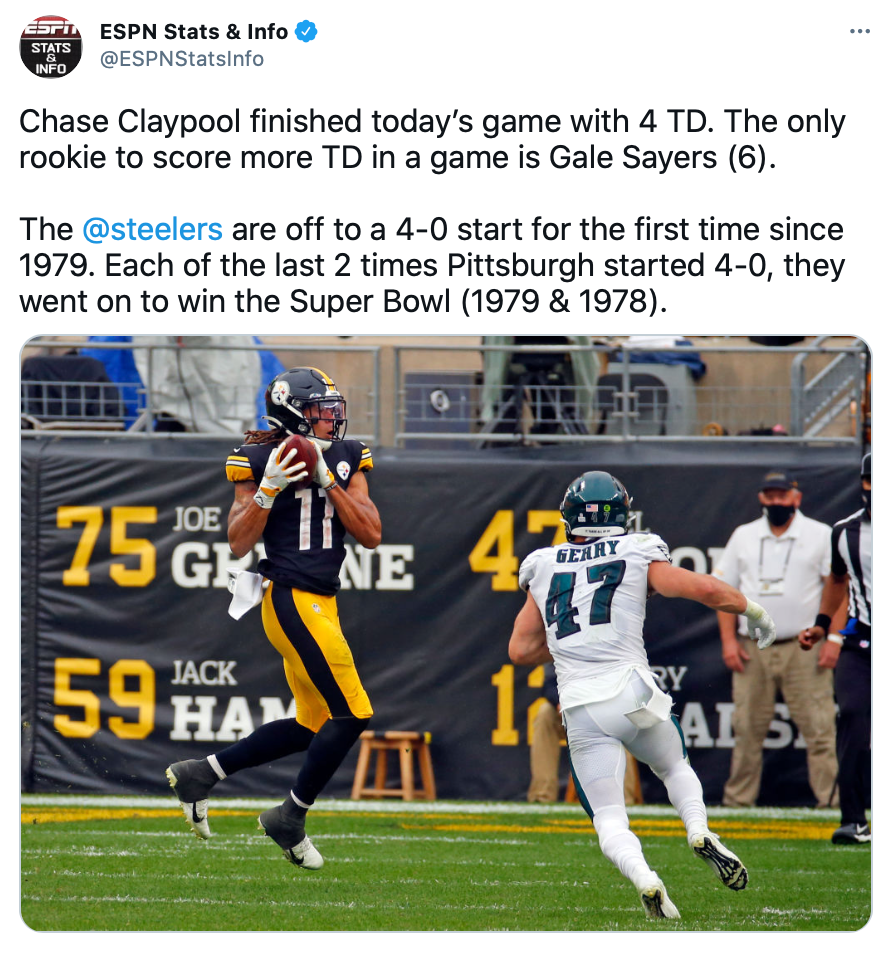Early every NFL in-season Tuesday morning, our grind begins with a collection of the previous week’s statistics. Even if your spreadsheets are perfectly constructed, only requiring a plug-in of the numbers, the process can take a full day to complete. That stretch of time is easily duplicated for those, like me, who operate within the world of college football.
Guess what? It’s Thursday morning, the first NFL matchup of the new week is merely hours away, and we’ve yet to even begin evaluating the matchups. Since we have every intention of getting our entries constructed, submitted into each of the early offerings from our favorite DFS platforms, there simply must be steps we can take early on to jump ahead of the curve. Lucky enough for us, we can take several steps during the offseason to reduce the amount of prep work to complete on those hectic Thursdays.
Short of direct plug-and-play of the numbers from our data providers, there’s nothing we can do about the statistical collection process. But I actually value that process. It’s an opportunity for me to catch many of the performances I’ve unintentionally overlooked from the previous week. However, since we have already been provided with the entire 18-week NFL schedule, nothing stands in our way from taking a deep dive into the individual coverage matchups. Not to be confused with a general strength of schedule review, this series will identify the individual passing game contributors facing either the most explosive or least appealing matchups throughout the season. If your desire is a big-picture review of schedule strength, you will find an outstanding, thorough breakdown of each position based upon determined strength of schedule provided by Scott Barrett inside the following links: QB | RB | WR | TE.
The Basic Approach
The first order of business is accounting for the defensive coordinator (DC) turnover. A massive 44% of the DCs from last season have been replaced. Seven (22%) were forced out, four (13%) were lured to positions on new teams, and three (9%) voluntarily resigned or retired. For those teams hiring new DCs, we will need to wait until the first few weeks of the season have been played before we can draw a concrete understanding of their expected schemes. However, as the old saying goes: the tiger cannot change his stripes. Each of these newly hired DCs provide us with a paper trail of previous usage. Either as a position coach or coordinator, these newly installed DCs have already provided us with the framework we need for the purpose of tentatively evaluating the matchups. The first step, pulling from the defensive scheme history from every DC, involved collecting the three most-used coverage shells.
With a total of 272 games on the 2021 schedule, the 544 combined matchups for each team’s anticipated starting QB, WR1, WR2, WR3, and TE would be analyzed. That’s a grand total of 2,720 matchups. The next step involved recording the three coverage strengths, one weakness for each of those players. Whenever possible, each “strength” and “weakness” was determined based on the previous three seasons of play.
Therein lies an issue. We certainly do not want to exclude the players with less than three years of NFL play. For the rookies without a single game of action, the coverage strengths and weaknesses were pulled from college data. For the NFL sophomores, the data was drawn directly from those who submitted a complete/nearly complete season of data (i.e., Justin Herbert, Justin Jefferson, etc.). But the college numbers were again used for those failing to provide reliable data from their rookie seasons. Finally, for the few NFL veterans with, for whatever reason, limited action during the last three seasons (i.e., Tyrod Taylor, etc.), every attempt was made to fill in the blanks using information prior to the last three years.
The next step involved highlighting the player matchups on both ends of the spectrum. The most exceptional of matchups received a green highlight in each of his three coverage strengths. The preliminary matchups to avoid would be facing a defense featuring their coverage scheme weakness without a single shell of strength. However, for each of the receivers evaluated, another step was required. The tiny detail of shadow threats would need to be factored. A receiver may be facing all three of his coverage scheme strengths, but drawing a coverage trail from a defender such as Jalen Ramsey or Bradley Roby would entirely squash those expectations.
For in-depth information on each of the most important defensive coverage schemes, make sure you check out the following links: Coverage Glossary | Cover 1 | Cover 2 | Cover 3 | Cover 4. If you missed the first two entries in the series, here are the links where you can find the QBs and WR1s.
The “Perfect” WR2 Matchups
As underlined concerning the WR1s, defining each team’s WR2 is all about your preferred flavor. I’ll be writing up the WR3s after this entry, so more than enough WRs will be evaluated to offset any differences of opinion in the WR pecking orders. As for the “perfect” label, we’re looking for the matchups where a defense will feature each of the three determined coverage schemes determined to be a strength from that WR’s history:
| Week | Team | Receiver 2 | Opponent | 2° Shadow Threat |
| 2 | Atlanta | Russell Gage | Tampa Bay | Jamel Dean |
| 3 | Philadelphia | DeVonta Smith | Dallas | Anthony Brown |
| 4 | Dallas | CeeDee Lamb | Carolina | Donte Jackson |
| 6 | Tennessee | Julio Jones | Buffalo | Tre'Davious White |
| 8 | Minnesota | Adam Thielen | Dallas | Anthony Brown |
| 10 | New York | Denzel Mims | Buffalo | Tre'Davious White |
| 10 | Tennessee | Julio Jones | New Orleans | Malcolm Jenkins |
| 11 | Green Bay | Marquez Valdes-Scantling | Minnesota | Patrick Peterson |
| 12 | Dallas | CeeDee Lamb | Las Vegas | Rasul Douglas |
| 12 | Las Vegas | John Brown | Dallas | Anthony Brown |
| 12 | New England | Jakobi Meyers | Tennessee | Caleb Farley |
| 13 | Atlanta | Russell Gage | Tampa Bay | Jamel Dean |
| 13 | Las Vegas | John Brown | Washington | William Jackson III |
| 13 | Minnesota | Adam Thielen | Detroit | Quinton Dunbar |
| 14 | Houston | Randall Cobb | Seattle | Jamal Adams |
| 15 | Philadelphia | DeVonta Smith | Washington | William Jackson III |
| 15 | San Francisco | Brandon Aiyuk | Atlanta | Mykal Walker |
| 17 | Arizona | A.J. Green | Dallas | Anthony Brown |
| 17 | Green Bay | Marquez Valdes-Scantling | Minnesota | Patrick Peterson |
| 17 | Philadelphia | DeVonta Smith | Washington | William Jackson III |
| 17 | San Francisco | Brandon Aiyuk | Houston | Desmond King |
| 18 | New York | Denzel Mims | Buffalo | Tre'Davious White |
| 18 | Philadelphia | DeVonta Smith | Dallas | Anthony Brown |
This is where things get very interesting. With most of the WR1s, you are starting your studs 95% of the time, independent of the matchups. Perfect matchup information on the WR1s is most valuable for redraft purposes. And the WR1s, for the most part, will have DFS salaries high enough that will require an amount of reflection before deciding on exposure. But some of the WR2s above will slip under the radar, drawing entirely affordable prices. Some of the names (i.e., Julio Jones and Adam Thielen, etc.,) are WR1s with the luxury of playing with other WR1s, and their salaries will reflect that reality.
The first name that jumps out is Russell Gage. Two solid performances do not make a season, but the two games against the Buccaneers are only those that feature each of his coverage strengths. Gage is a receiver that has done his best work in two-high safety sets. He’ll face seven other defenses featuring either Cover 2, Cover 4, or Cover 6 as their primary scheme. I’ve defined him as the WR2, but he’ll most definitely be third in the pecking order behind Calvin Ridley and Kyle Pitts. DC Todd Bowles is certainly a force, tossing more featured coverage schemes at teams than all others last season sans Kansas City. But they feature Gage’s wheelhouse. Adding more fuel to Gage’s fire, word is being spread around town that he’ll be set free from the slot. Yummy!
It’s very likely that the DFS decision makers will attach a salary to CeeDee Lamb that’s in line with his 2020 season. To think, he only fell 65 yards shy of 1,000 receiving yards, despite playing with Dak Prescott for only five games. Lamb loves him some Cover 3, so much so that he is unfazed by the 3-Seam/Match 3/Rip-Liz variation. It’s not unheard of, but few receivers can make that claim. He is so good against 3-Seam that I have it listed as his secondary coverage strength. Perhaps he’ll show us a vulnerability in 2021 but, until that time, he is listed without a single scheme weakness. It should go without saying that Lamb should be considered in every one of your DFS rosters, in all game types against Carolina (Week 4) and Las Vegas (Week 12).
I find the pre-training camp reports talking down Denzel Mims as amusing. And, when Keelan Cole is being tossed around as a starter, I take it all with a grain of salt. Here’s the thing, if we’re believing starting lineup opinions during these extremely short “walkthroughs,” then I guess we should also assume James Morgan will start over Zach Wilson. For all we know, all of these rumors/opinions/snap orders/playing with the _th team stuff will turn out to hold weight. I’m not convinced that a single thing has changed. The Jets need Mims to succeed in order to provide Wilson with the best opportunity for success. Cole is nothing more than a journeyman, slot retread. He may see some early snaps, but he will fall behind Jamison Crowder and Elijah Moore in the pecking order. Mims offers the team’s best chance at lifting the defensive lid. Get the man rostered while his stock is “low.”
Before you fall out of your seat with excitement attempting to draft DeVonta Smith with your first pick, understand that all coverage information was collected from his college career. First of all, the Alabama O-line provided that offense with all the time it wanted to work. Second, he submitted the outrageous numbers during his Heisman campaign with Mac Jones under center. If you wanted to choose the two most contrasting QB styles in the NFL, Jones and Jalen Hurts would certainly fit the bill. I do think Smith will match up well against Dallas. Defended by Washington is another story entirely. However, we won’t need to make any decisions on Smith vs. the Football Team until late in the season.
Additional Prime WR2 Matchups of Note
These matchups are particularly important since they pit the WR2s who excel vs. Cover 1 (man) and the defenses who feature a Cover 1 as its primary scheme. Best of all, in most cases, you will not be required to foot WR1 salaries:
| Week | Team | WR2 | Opponent | 2° Shadow Threat |
| 1 | Arizona | A.J. Green | Tennessee | Caleb Farley |
| 1 | Carolina | Robby Anderson | New York | Bryce Hall |
| 1 | Las Vegas | John Brown | Baltimore | Chuck Clark |
| 1 | Miami | Will Fuller | New England | J.C. Jackson |
| 1 | Minnesota | Adam Thielen | Cincinnati | Trae Waynes |
| 2 | Minnesota | Adam Thielen | Arizona | None |
| 3 | Arizona | A.J. Green | Jacksonville | Shaquill Griffin |
| 3 | Las Vegas | John Brown | Miami | Byron Jones |
| 4 | Cincinnati | Tee Higgins | Jacksonville | Shaquill Griffin |
| 4 | L.A. Rams | Cooper Kupp | Arizona | None |
| 6 | L.A. Chargers | Mike Williams | Baltimore | Chuck Clark |
| 6 | Miami | Will Fuller | Jacksonville | Shaquill Griffin |
| 7 | Cincinnati | Tee Higgins | Baltimore | Chuck Clark |
| 8 | Cincinnati | Tee Higgins | New York | Bryce Hall |
| 8 | L.A. Chargers | Mike Williams | New England | J.C. Jackson |
| 9 | Carolina | Robby Anderson | New England | J.C. Jackson |
| 9 | L.A. Rams | Cooper Kupp | Tennessee | Caleb Farley |
| 9 | Minnesota | Adam Thielen | Baltimore | Chuck Clark |
| 10 | Carolina | Robby Anderson | Arizona | None |
| 10 | Miami | Will Fuller | Baltimore | Chuck Clark |
| 11 | Las Vegas | John Brown | Cincinnati | Trae Waynes |
| 11 | Miami | Will Fuller | New York | Bryce Hall |
| 12 | Carolina | Robby Anderson | Miami | Byron Jones |
| 13 | L.A. Chargers | Mike Williams | Cincinnati | Trae Waynes |
| 13 | L.A. Rams | Cooper Kupp | Jacksonville | Shaquill Griffin |
| 13 | N.Y. Giants | Darius Slayton | Miami | Byron Jones |
| 13 | Philadelphia | DeVonta Smith | New York | Bryce Hall |
| 14 | L.A. Rams | Cooper Kupp | Arizona | None |
| 15 | Miami | Will Fuller | New York | Bryce Hall |
| 16 | Cincinnati | Tee Higgins | Baltimore | Chuck Clark |
| 17 | L.A. Rams | Cooper Kupp | Baltimore | Chuck Clark |
| 17 | Miami | Will Fuller | Tennessee | Caleb Farley |
| 18 | Miami | Will Fuller | New England | J.C. Jackson |
When we are discussing man-to-man coverage, we simply must consider the possibility of a shadow threat. Luckily for the WR2s, they’ll avoid the truly elite coverage trails. The two most significant secondary shadows in the data set above are J.C. Jackson and Byron Jones. Jackson could actually become the primary CB for the Patriots if they move Stephon Gilmore. Just ignore any ideas that the Dolphins will do the same with Xavien Howard. Howard vaulted himself to becoming one of the top-three or four CBs in all of the NFL last season. Miami simply must find middle ground with “X” if they want to make a serious run this season. Jackson is easily the most significant man defender on this list. While Jones is pretty damn good, his best work is done when the Fins fall back into their Cover 3.
You’ll notice some repeat WR2 entries on the list. Working alphabetically — sorry A.J. Green — Adam Thielen’s name is the first to stand out. It’s no wonder when his offense is led by the very best Cover 1 QB in the business, Kirk Cousins. Making life even more difficult for opposing defenses, Thielen is accompanied by Justin Jefferson, the second- or third-best Cover 1 WR in the game. Joining Jefferson in the top-five of Cover 1 WRs, Thielen thrives against man coverage. His 3.05 yards/route (YPRR) is 10th-best over the last three years. That’s pretty good. But he has generated 0.84 fantasy points/route (FP/Rt) during that stretch, which ranks third-best. Don’t overthink those matchups with Cincinnati (Week 1), Arizona (Week 2), and Baltimore (Week 9).
Something special could be brewing in Los Angeles. Yes, Justin Herbert and crew offer plenty of promise. But I am referring to the Rams fielding an offense that just might be on par with their defense. Acquiring Matthew Stafford was an ingenious move by GM Les Snead. You can count on one hand the number of QBs who are listed with a “None” in the coverage weakness category of my system; Stafford is one of those names without a single vulnerability. The fact that he was able to achieve his success with some of those Detroit teams is nothing short of spectacular. As you can see for yourself, Cooper Kupp was gifted with five games against Cover 1 defenses. And — assuming Robert Woods will draw Marlon Humphrey in Week 17 — he should make it through every one without a significant trail. Kupp has accumulated 3.02 YPRR (12th-best) and 0.56 FP/Rt (14th) over the last three seasons. Expect more of the same.
I do think John Brown could have a comeback season in Las Vegas, I would just love to see Marcus Mariota as the guy delivering the ball. He’s not, so we’ll jump to Mike Williams. It blows my mind that Williams had such a mediocre season during Justin Herbert’s rookie breakout. That said, things are on the up-and-up for the Chargers’ starting X receiver. New OC Joe Lombardi recently brought attention to the fact that the featured X in the offenses he’s coached has continually produced “big” seasons. Since Lombardi previously coached in New Orleans, he is obviously referring to Michael Thomas. We shouldn’t expect “CantGuardMike”-type numbers, but simply seeing Williams take advantage of Herbert’s big arm to break a thousand yards and around seven TDs would be outstanding. Drawing a Jackson shadow in Week 8 would be tough, but I’d be comfortable with exposure at responsible levels in each of these matchups.
Hit with a pair difficult shadows, Robby Anderson’s plus Cover 1 matchups are essentially cut in half. However, Tee Higgins was delivered four spectacular matchups tailored to his skillset. Assuming the Bengals will field an improved O-line — it wouldn’t take much — the two face-offs with the Ravens’ defense could net much better results for the offense than in Week 5 last season. When Cincy drafted Ja’Marr Chase, it surprised me quite a bit how quickly the consensus wrote off Higgins. Trust me, I get it. Chase is one of the top-10 WR prospects we’ve seen over the last 10-15 years. But, not only is Higgins good in his own right, he’ll see the same quality targets as Chase from Joe Burrow. Trust me, Chase, Higgins, and Tyler Boyd will split the WR target share three ways. Here’s hoping Higgins and Boyd’s DFS salaries are as depressed as their current fantasy reps.
Finally, we have Will Fuller V with six five excellent Cover 1 matchups — don’t forget he’ll conclude his six-game PED ban by sitting out Week 1. Even better, he’ll avoid a significant shadow in all but one (Jackson in Week 17). If not for the looming threat of yet another hamstring injury, I’d be all over touting Fuller in redraft, and a round earlier than his sixth-round ADP. But Fuller is worth all of that risk with such a Cover 1-laden schedule. Over the last three seasons, Fuller has generated 3.01 YPRR (14th-best) and 0.63 FP/Rt (11th). Who knows, Fuller may be in the discussion as Miami’s WR1 at this time next season.
As with the WR1s, this next grouping assembles a truly rare breed: the WR2s that excel against Cover 2 and Cover 6 — the coverages that give passing attacks, on average, the most trouble:
| Week | Team | WR2 | Opponent | 2° Shadow Threat |
| 1 | Denver | Jerry Jeudy | N.Y. Giants | Adoree' Jackson |
| 2 | Tampa Bay | Chris Godwin | Atlanta | Mykal Walker |
| 3 | Atlanta | Russell Gage | N.Y. Giants | Adoree' Jackson |
| 3 | Cleveland | Jarvis Landry | Chicago | Tashaun Gipson |
| 3 | Kansas City | Mecole Hardman | L.A. Chargers | Michael Davis |
| 4 | Kansas City | Mecole Hardman | Philadelphia | Rodney McCleod |
| 5 | Cleveland | Jarvis Landry | L.A. Chargers | Michael Davis |
| 5 | Detroit | Quintez Cephus | Minnesota | Patrick Peterson |
| 5 | New England | Jakobi Meyers | Houston | Desmond King |
| 6 | Green Bay | Marquez Valdes-Scantling | Chicago | Tashaun Gipson |
| 7 | Cleveland | Jarvis Landry | Denver | Patrick Surtain II |
| 9 | Kansas City | Mecole Hardman | Green Bay | Josh Jackson |
| 11 | New England | Jakobi Meyers | Atlanta | Mykal Walker |
| 11 | Tampa Bay | Chris Godwin | N.Y. Giants | Adoree' Jackson |
| 12 | Green Bay | Marquez Valdes-Scantling | L.A. Rams | Darious Williams |
| 12 | San Francisco | Brandon Aiyuk | Minnesota | Patrick Peterson |
| 13 | Detroit | Quintez Cephus | Minnesota | Patrick Peterson |
| 13 | Kansas City | Mecole Hardman | Denver | Patrick Surtain II |
| 13 | Tampa Bay | Chris Godwin | Atlanta | Mykal Walker |
| 14 | Green Bay | Marquez Valdes-Scantling | Chicago | Tashaun Gipson |
| 15 | Kansas City | Mecole Hardman | L.A. Chargers | Michael Davis |
| 16 | Cleveland | Jarvis Landry | Green Bay | Josh Jackson |
| 16 | Detroit | Quintez Cephus | Atlanta | Mykal Walker |
| 18 | Kansas City | Mecole Hardman | Denver | Patrick Surtain II |
We saw that Tom Brady made out very well during the scheduling process … as if he needed it. And we should be all over Chris Godwin in his three game entries. It’s one thing to excel against Cover 2, it’s quite another to be the premiere receiver in the game in opposition. He may not be the dominant Cover 1 presence, but Godwin has made up for it with 2.95 YPRR (third-best) and 0.59 FP/Rt (first) over the last three seasons facing Cover 2. Jarvis Landry is credited with four plus Cover 6 matchups, but he’ll need to see some improvements from Baker Mayfield against the scheme before we get too excited.
Should Aaron Rodgers never play another down for the Packers, we would essentially cross each of the positive Cover 6 matchups off the list for Marquez Valdes-Scantling. Even if Rodgers returns, the three defenses he’d play against (Bears [twice] and Rams) couldn’t be more daunting. We’ve all been waiting for it to happen, now it seems as though his window of opportunity could be closing. The Chiefs drafted a true fifth-round gem in Cornell Powell and word around town has the coaching brass enamored with Byron Pringle. Mecole Hardman may have six combined positive scripts vs. Cover 6-heavy defenses, but he’ll actually need to do something worth a damn before we can comfortably move him away from the career special teamer category.
One of the names that has me quite excited is Quintez Cephus. Everyone in the industry will have you believe the Lions are completely bereft of skill-position talent beyond T.J. Hockenson and D’Andre Swift. From the standpoint of 40-times and dispensed draft capital, Cephus and Amon-Ra St. Brown fall short of the typical distinction. However, ask any NFL scout if he prefers WRs with either straight-line speed or an innate ability to get open, and they’ll all choose the latter. That’s precisely the strategy the Lions used when selecting St. Brown and Cephus. It’s possible that Tyrell Williams may see early snaps to see how much he has left in the tank, but we all know it’s next to nothing. In fact, do not be surprised when the Lions eventually feature Cephus, St. Brown, and UDFA Jonathan Adams in three WR sets.
Since quality WRs, in general, do very well against Cover 4 — the most vulnerable of shells to the pass — the next data set will be those who excel vs. Cover 3, against the defenses featuring Cover 3:
| Week | Team | WR2 | Opponent | 2° Shadow Threat |
| 1 | Indianapolis | Michael Pittman | Seattle | Jamal Adams |
| 1 | New York | Denzel Mims | Carolina | Donte Jackson |
| 2 | Houston | Randall Cobb | Cleveland | Greg Newsome II |
| 2 | New Orleans | Tre'Quan Smith | Carolina | Donte Jackson |
| 2 | Pittsburgh | Chase Claypool | Las Vegas | Rasul Douglas |
| 2 | Tennessee | Julio Jones | Seattle | Jamal Adams |
| 3 | Chicago | Darnell Mooney | Cleveland | Greg Newsome II |
| 3 | Houston | Randall Cobb | Carolina | Donte Jackson |
| 5 | Chicago | Darnell Mooney | Las Vegas | Rasul Douglas |
| 6 | Pittsburgh | Chase Claypool | Seattle | Jamal Adams |
| 7 | New Orleans | Tre'Quan Smith | Seattle | Jamal Adams |
| 8 | Pittsburgh | Chase Claypool | Cleveland | Greg Newsome II |
| 9 | Chicago | Darnell Mooney | Pittsburgh | Terrell Edmunds |
| 13 | New Orleans | Tre'Quan Smith | Dallas | Anthony Brown |
| 15 | Tennessee | Julio Jones | Pittsburgh | Terrell Edmunds |
| 16 | Chicago | Darnell Mooney | Seattle | Jamal Adams |
| 17 | Indianapolis | Michael Pittman | Las Vegas | Rasul Douglas |
| 17 | New Orleans | Tre'Quan Smith | Carolina | Donte Jackson |
| 17 | Pittsburgh | Chase Claypool | Cleveland | Greg Newsome II |
I am of the mind that if Tre’Quan Smith was going to show us something, it would have already happened with future HOFer Drew Brees spreading the rock. Seeing his name several times on this list does nothing for me. It was Brees’ abilities vs. Cover 3 that Smith can thank for his name being listed. The two names that perk my senses are Chase Claypool and Darnell Mooney. To provide clarity, you’ll see some safeties listed in the secondary shadow threat column. That’s not an indication that I think they’ll shadow WR2s. I ordered the shadow threats based upon the implied threat, not the position they would defend.
As for Claypool, it may come as a surprise to learn that, if he continues at his rate from last season, he’ll land as the top Cover 6 WR in the game. He was that damn good opposite Quarter-Quarter-Half coverage in 2020. Claypool collected 3.89 YPRR (fourth-best) and 0.96 FP/Rt (second) across from Cover 6 during his rookie campaign. Mooney didn’t draw as much attention, but he was certainly a prized addition to the Bears’ offense. I’m nowhere near as excited with Mooney having Andy Dalton under center. As soon as Justin Fields takes over, look out! Fields provided more than enough examples of feeding WRs with elite speed with accurate throws, 40-to-60 yards downfield. The Fields-to-Mooney connection could become quite a thing for the NFL marketing in Chicago.
The Avoid List
To reiterate the criteria for a weekly matchup to avoid, these are the WR2s facing a defense that not only includes their glaring coverage weakness and are devoid of featuring any of their scheme strengths. As with the matchups to target, this list is far from exhaustive. It simply highlights the matchups where we need to think long-and-hard in favor of avoiding:
| Week | Team | WR2 | Opponent | 2° Shadow Threat |
| 1 | Kansas City | Mecole Hardman | Cleveland | Greg Newsome II |
| 1 | New Orleans | Tre'Quan Smith | Green Bay | Josh Jackson |
| 3 | Miami | Will Fuller | Las Vegas | Rasul Douglas |
| 3 | San Francisco | Brandon Aiyuk | Green Bay | Josh Jackson |
| 4 | Las Vegas | John Brown | L.A. Chargers | Michael Davis |
| 6 | Carolina | Robby Anderson | Minnesota | Patrick Peterson |
| 6 | Jacksonville | Marvin Jones | Miami | Byron Jones |
| 6 | Las Vegas | John Brown | Denver | Patrick Surtain II |
| 8 | New England | Jakobi Meyers | L.A. Chargers | Michael Davis |
| 8 | New Orleans | Tre'Quan Smith | Tampa Bay | Jamel Dean |
| 8 | San Francisco | Brandon Aiyuk | Chicago | Tashaun Gipson |
| 8 | Tampa Bay | Chris Godwin | New Orleans | Malcolm Jenkins |
| 10 | Cleveland | Jarvis Landry | New England | J.C. Jackson |
| 10 | Kansas City | Mecole Hardman | Las Vegas | Rasul Douglas |
| 10 | Minnesota | Adam Thielen | L.A. Chargers | Michael Davis |
| 10 | San Francisco | Brandon Aiyuk | L.A. Rams | Darious Williams |
| 11 | N.Y. Giants | Darius Slayton | Tampa Bay | Jamel Dean |
| 11 | New Orleans | Tre'Quan Smith | Philadelphia | Rodney McCleod |
| 12 | Atlanta | Russell Gage | Jacksonville | Shaquill Griffin |
| 13 | Washington | Curtis Samuel | Las Vegas | Rasul Douglas |
| 14 | Kansas City | Mecole Hardman | Las Vegas | Rasul Douglas |
| 15 | New Orleans | Tre'Quan Smith | Tampa Bay | Jamel Dean |
| 15 | Tampa Bay | Chris Godwin | New Orleans | Malcolm Jenkins |
| 16 | Arizona | A.J. Green | Indianapolis | Darius Leonard |
| 16 | Carolina | Robby Anderson | Tampa Bay | Jamel Dean |
| 16 | Las Vegas | John Brown | Denver | Patrick Surtain II |
| 16 | Pittsburgh | Chase Claypool | Kansas City | L'Jarius Sneed |
| 17 | Las Vegas | John Brown | Indianapolis | Darius Leonard |
| 18 | Carolina | Robby Anderson | Tampa Bay | Jamel Dean |
| 18 | Las Vegas | John Brown | L.A. Chargers | Michael Davis |
| 18 | San Francisco | Brandon Aiyuk | L.A. Rams | Darious Williams |
I was stunned to see how many difficult matchups Brandon Aiyuk will face this season. However, a pair of games facing the Rams explain much of that away. And we still need more data points from Aiyuk to really get a grasp of his coverage profile. The next name that pops out is John Brown. With four of his five negative upside games against AFC West opponents, perhaps Derek Carr can assist his production against the coverages he’s struggled with over the last three seasons. The list closes with more than enough reasoning to avoid Mecole Hardman, Robby Anderson, and Tre’Quan Smith at all costs. I feel lucky enough to have avoided putting any stock into the three but, if you have bought into any of them, you may want to test the trade waters to see if it’s possible to recoup any of that investment before it’s too late. If Hardman is unable to produce with Patrick Mahomes, I seriously doubt he’ll be able to do it elsewhere.
Employing the Information
Much of the approach to using this data is on a common sense-level. And the majority of the factors involved at QB and WR are nearly identical. First, everything depends on the format. As I’ve already stated, you want to start your studs in season-long formats unless you happen to have elite WRs on standby. My goal is, by the conclusion of this series, you will be provided with enough valuable information to already supply you with a leg up in preparation over the massive DFS population.
Keep in mind, most of these WR2s have provided compelling data over a considerable stretch of action, and have either proven to have mastered or failed facing the specific coverage types. But why have these WR2s succeeded/failed? Three main factors help to answer that question:
- Pre-Snap Reads to Identify the Scheme
- When the QB and his WR unit have been able to identify the coverage, working together to employ the combo routes to attack all three levels of the secondary that have been proven to succeed in response
- WR separation — when it comes to the world of receiving, the ability to get open is far more important than speed
Make no mistake, coverage schemes are not simply defensive gimmicks. And, whether you like it or not, understanding how to take advantage of them in fantasy is a necessity. Coverages determine the scoring of every single (non-kicking) fantasy point scored in football. Teams either have a QB able to identify, attack, and the WRs able to get open or their offense falls flat on its face. Our fantasy squads mirror those alternatives.


